Living in Long Island's seaports: Sayville, Sag Harbor and Greenport
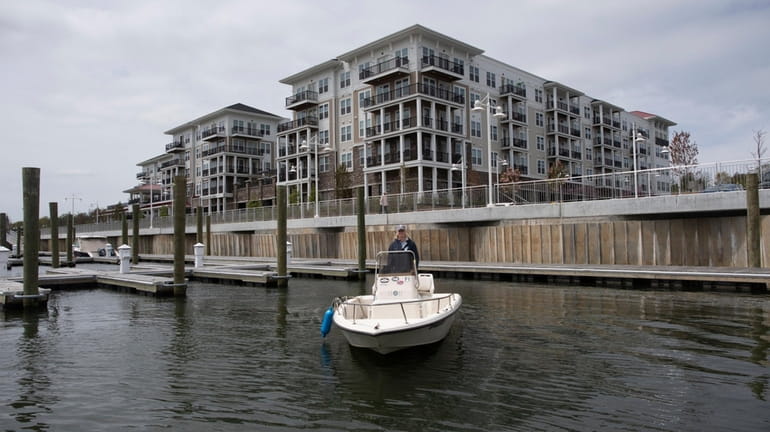
Jaclyn Smith, a world-champion rower and head coach of Long Island University's rowing teams, takes her motorboat out in front of her home in Glen Cove. Credit: Johnny Milano
Jaclyn Smith’s move to the new Harbor Landing apartment complex on Glen Cove’s waterfront is introducing the world-champion rower to the seaport life she missed as a child in Williston Park.
“I grew up landlocked,” joked Smith, 28, a two-time world champion rower and a silver medalist at the 2016 Paralympics games in Rio de Janeiro. Last summer, Smith was appointed head coach of Long Island University's new men’s and women’s rowing teams, prompting her to go apartment-hunting in downtown Glen Cove with her boyfriend, Kenny Smith, also 28, a software engineer.
“We saw the water was near and said, ‘Let’s go for a walk,' ” Smith recalled of the stroll that led the couple to Garvies Point, where an ongoing $1 billion development is adding 1,100 new apartments and condos, parks, retail establishments, marinas and a much-heralded ferry to the historic waterfront.
At Harbor Landing, they pay $3,900 a month to rent a one-bedroom apartment with a den, full kitchen and balcony with a sunrise view, Smith said. Rents in the building range from $2,990 per month for a one-bedroom to $5,990 per month for a two-bedroom, according to Manhattan-based developer RXR. Next door is the 167-unit Beacon at Garvies Point condo complex, where prices range from $923,000 to more than $2 million, according to RXR.
Harbor Landing’s amenities include a gym where Smith works out, a swimming pool, a sports lounge, kiddie and dog parks and a marina with dockage for 17- to 27-foot boats, at $140 per foot for the May to November season, according to RXR.
“I’d like to go out some day just for pleasure, but I’m coaching all the time,” Smith said on a recent cloudy afternoon as she sat behind the wheel of her 16-foot motorboat. She is looking forward to taking the boat out to the harbor to coach her student athletes, visiting the adjacent soon-to-open Garvies Point Brewery’s tasting facility, and possibly taking the ferry to Manhattan.
The city recently met with a potential operator for the Glen Cove Ferry, which was originally scheduled to open in 2020 but was postponed by the COVID-19 pandemic, and will move forward “when demand for commuter services can sustain it,” said Glen Cove Mayor Pamela D. Panzenbeck.
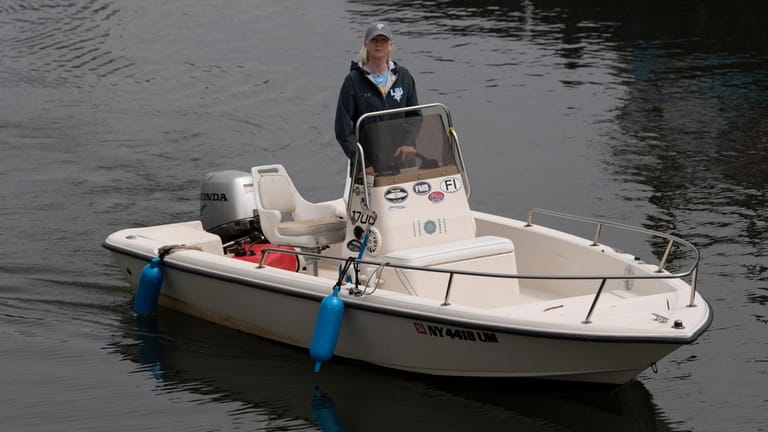
"I grew up landlocked," Jaclyn Smith jokes of her hometown of Williston Park. A silver medalist at the 2016 Paralympics games in Rio de Janeiro, Smith said she is enjoying living on the Glen Cove waterfront. Credit: Johnny Milano
Summers of boating, crabbing
The world can be your oyster when you move to a Long Island seaport community, where a raw bar, a ferry to an island restaurant (that would be Shelter and Fire islands), sailboat dotted bays and shoreline sunsets all lie within walking distance of home.
“I spent my early summers swimming, boating and crabbing on the local canals,” said Tonia Mitchell, 61, a retired New York City police sergeant who was 10 years old in 1970 when her family moved from Crown Heights, Brooklyn, to a split-level ranch in Freeport’s Meister Beach area. “We were the first Black family to move into the neighborhood,” said Mitchell, who in 2000 bought her own home, a 1950s splanch, in the Colony Park development, near Cow Meadow Park and the Nautical Mile.
Historically, Long Island seaports tend to be diverse communities where locals with deep maritime roots live alongside young professionals, artists, educators and other relative newcomers.
“There are generations that live in those towns that never leave, and everybody knows everybody,” says Terry Lister-Blitman, executive director of the Long Island Maritime Museum in West Sayville. Lister-Blitman says she and her husband “never felt like outsiders” after they moved 30 years ago into a four-bedroom Sayville house built in the 1880s.
Here are three Long Island seaports where housing stock ranges from Main Street apartments and waterfront condos to winterized bungalows and million-dollar mansions by the sea.
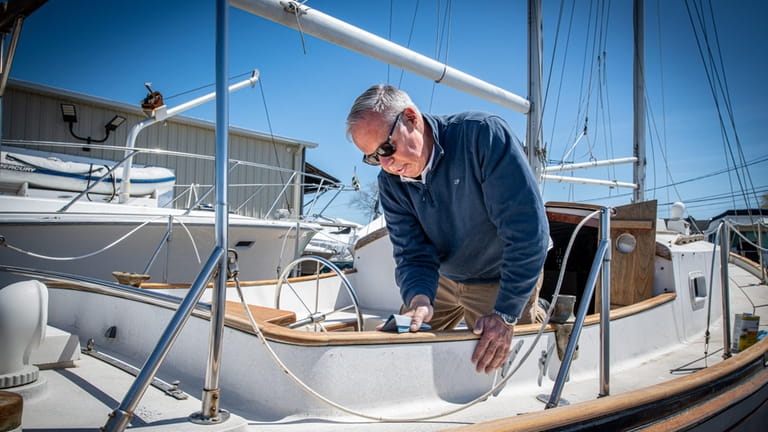
“Our whole family is really engaged in the sport of sailing and the culture of the Great South Bay,” said Doug Shaw of West Sayville, above, working on his 34-foot sleep-in schooner. Credit: Newsday/J. Conrad Williams Jr.
Sayville
“When you’re in town in Sayville, you’re less than a mile from the bay,” says Doug Shaw, 54, a longtime West Sayville resident who lives in a Dutch cottage.
Shaw walks to his job as a Sayville High School English teacher, to the downtown to shop at the general store and chocolatier, and to the waterfront, where he grew up sailing every weekend and currently docks his 34-foot sleep-in schooner. Sometimes a nephew, Casey Malone, an 18-year-old senior at Sayville High School, helps him work on the boat.
“Our whole family is really engaged in the sport of sailing and the culture of the [Great South] Bay,” said Shaw. His father, Robert, was a sailboat race committee chairman, his uncle was a sailmaker, and Shaw is a past commodore of the Sayville Yacht Club. While others board the Sayville Ferry Service to Fire Island, Shaw sails down Browns River across the bay to Watch Hill or Sailors Haven.
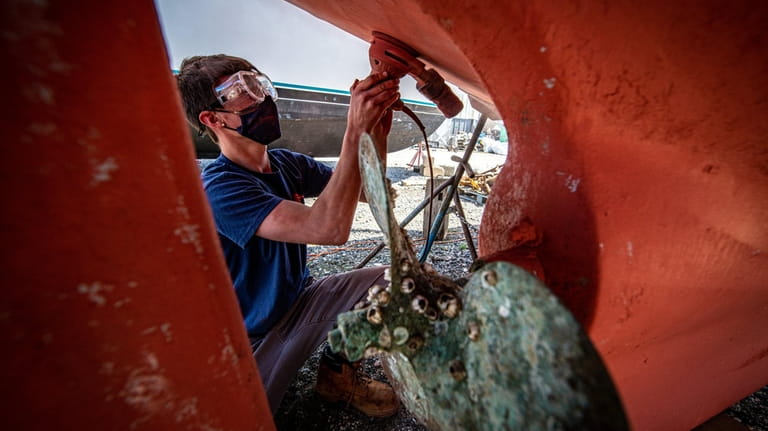
Casey Malone works on his uncle Doug Shaw's boat at Westin's Marine Center in Sayville. Credit: Newsday/J. Conrad Williams Jr.
“Sayville is a big community of boaters, and some clammers and fishermen still make a living off the bay,” said local real estate broker Leesa Byrnes. Rents for apartments above downtown stores start at about $1,800 a month.
Single-family houses, including “old Victorians,” are priced from $500,000 to $600,000, Byrnes said. In south Sayville, historic homes are selling for $900,000, Byrnes said. “The minute a historic house comes up for sale, we get bidding wars,” with offers $80,000 to $90,000 over the asking price, she said.
“It’s a nice life when the weather’s good,” Shaw said of living in Sayville “And when the weather’s bad, we hope it gets really cold so we can break out the ice boats.”

“Living in Sag Harbor has inspired me quite a bit,” said artist and historian Michael Butler. “So many of my paintings feature water — either the bay or the ocean." Credit: Gordon M. Grant
Sag Harbor
Sag Harbor is steeped in maritime history and tradition — perhaps more than any other Long Island seaport. In 1789, the South Fork village’s deep-water harbor became one of the United States’ first official ports of entry in New York. In the 19th century Sag Harbor was such a well-known whaling port that it was name-checked in Herman Melville’s “Moby-Dick.”
That history lives on in Captain’s Row, where upscale homes have been preserved and are "as beautiful now as they were when first built back in the whaling days,” said Barbara Lobosco of Douglas Elliman Real Estate. Inventory is low and prices steep in Sag Harbor. Lobosco said that 28 properties are on the market “in and around the village,” including historic whaling captains’ homes. The homes list from $1.3 million to $25 million.
A photo taken around 1934 of Michael Butler's relatives on the water off Sag Harbor includes, from left, a cousin, Loretta Brewster, Butler's mother, Margaret Burwell, and a great-uncle, James Harris. The man in the water is another great-uncle, John Harris. Credit: Butler Family
Sag Harbor has also been a favorite of artists such as novelist John Steinbeck, who lived there in the 1950s and '60s, and Lena Horne and Harry Belafonte, who were among the celebrities who visited the beaches of Sag Harbor Hills, Azurest and Ninevah (aka SANS), historic African American summer resorts that today are also year-round communities.
“Living in Sag Harbor has inspired me quite a bit,” said Michael Butler, 66, an artist, historian and former manager of the Sag Harbor Whaling Museum. “So many of my paintings feature water — either the bay or the ocean," including a painting depicting the 1839 Amistad slave ship mutiny.
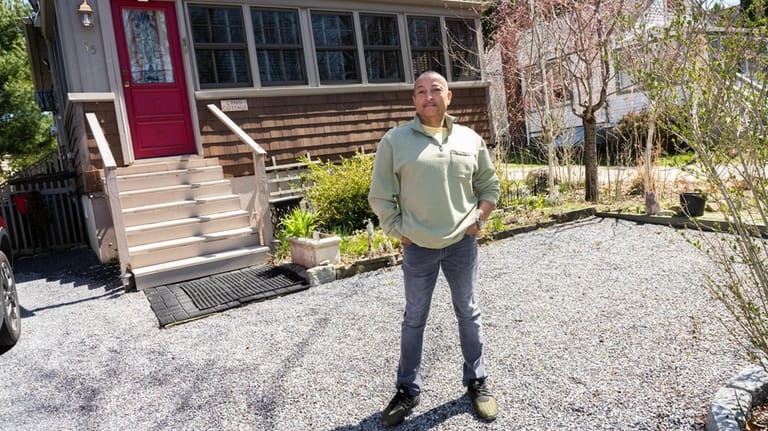
Michael Butler at the home he bought in the Eastville section of Sag Harbor in the 1980s. Credit: Gordon M. Grant
Butler’s family began summering there in the early 1920s, visiting the harbor by boat. In the 1980s, he moved from the city to a modular house in Sag Harbor, and eventually to a two-bedroom cottage he purchased from a family member in Eastville, a community that Butler says “got its start after people of color moved here in the 1820s after slavery ended in New York.”
His property, which includes a rental cottage, was appraised at $440,000 in 2005, and has since tripled in value, he said.
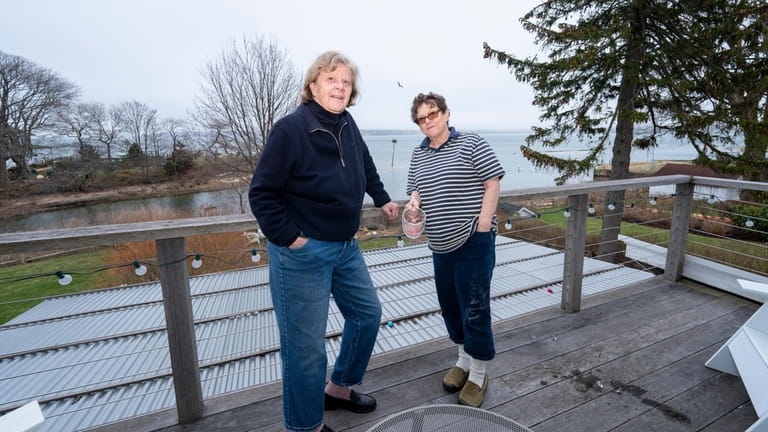
Jill Dunbar, left, and Jenny Feder on the bedroom deck of their Greenport home. Credit: Randee Daddona
Greenport
If you live in Greenport, you’re surrounded by maritime history — from the deep-water harbor where, according to the village website, more than 550 ships were built and launched starting in the 19th century, to homes with nautical details.
“My house was a Sears kit house, and the walls look like the inside of a ship,” said Jill Dunbar, an associate broker at Douglas Elliman. Dunbar and her wife, Jenny Feder, an artist, live in the village’s West Dublin neighborhood, so named for the Irish shipbuilders who built homes there.
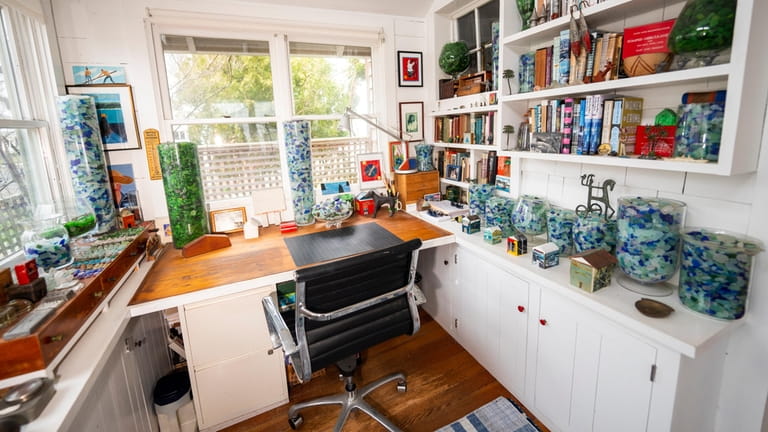
Sea glass collections get a starring role at the Greenport home of Jill Dunbar and Jenny Feder. Credit: Randee Daddona
Greenport is being transformed by “talented chefs coming into the town to be entrepreneurs,” Dunbar said. “We have dozens of restaurants using a lot of local produce and seafood.”
The real estate market has changed somewhat from the “pandemic exuberance” of the last two years, when “if it closed, it closed over ask,” Dunbar said of homes in Greenport, which include Victorians, bungalows, “grand, elegant” Captain’s Row houses and the small Cape about two blocks from the water, "which listed at $975,000 and sold for more than $1.2 million.”
But, with inventory low this year, “if something of worth comes along, and it’s well priced, it’s just got incredible interest,” Dunbar said.
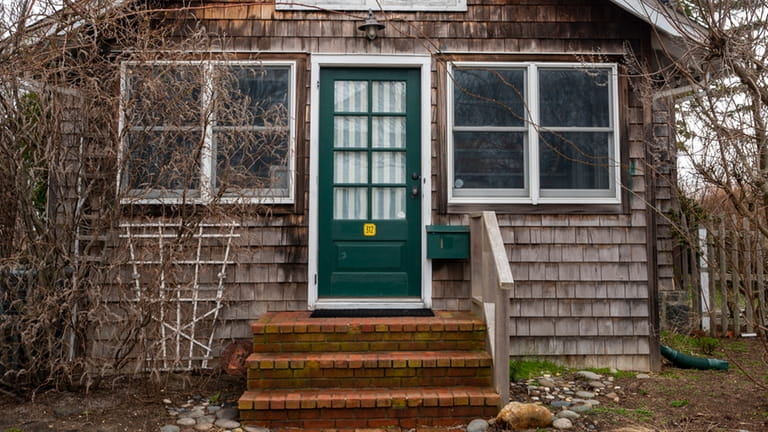
Jill Dunbar and Jenny Feder's Greenport house was built from a Sears kit. Credit: Randee Daddona
Check out a nearby seaport with these upcoming events:
Sip Into Summer: June 3, 6-9 p.m., Ferry Terminal, Glen Cove, glencoveny.gov
Sag Harbor Arts & Crafts Fair: June 18-19, 9 a.m.-5 p.m., Marine Park, sagharborchamber.com
Sayville Summerfest: Aug. 5-7, greatersayvillechamber.com
Maritime Festival, Greenport Sept. 24-25, eastendseaport.org
— JIM MERRITT
